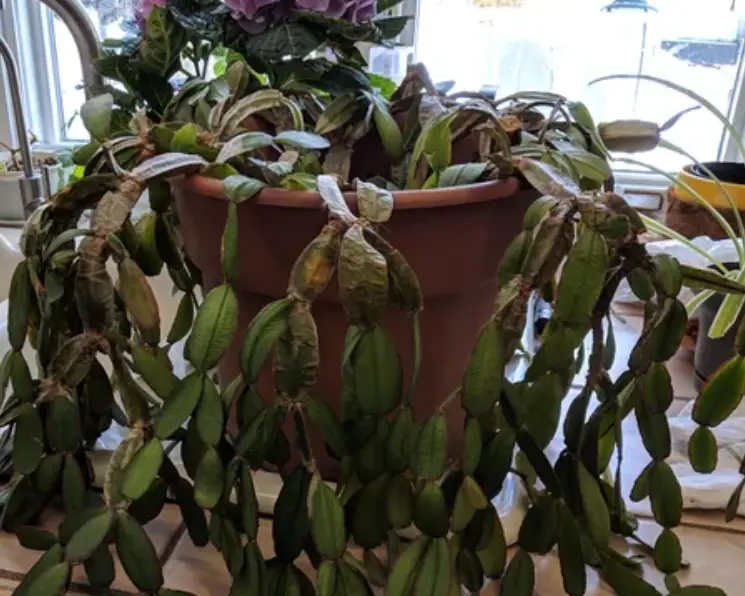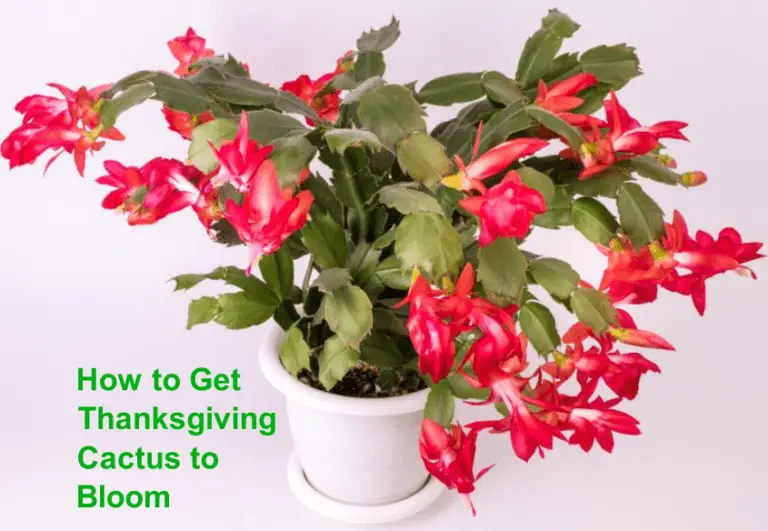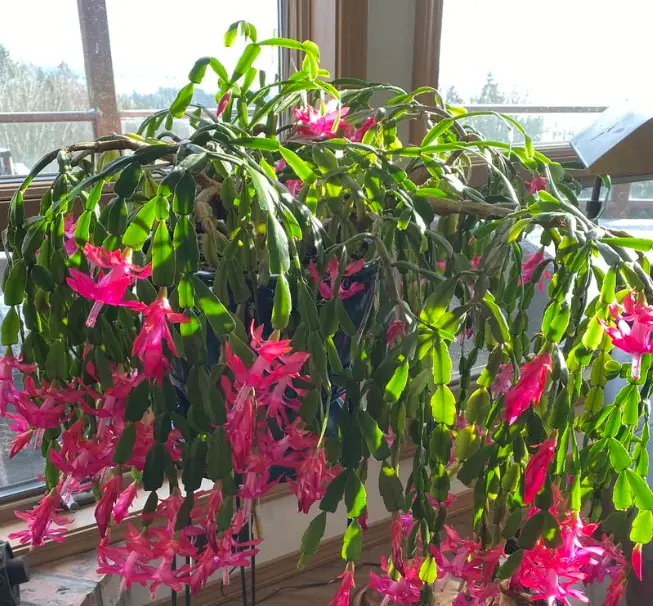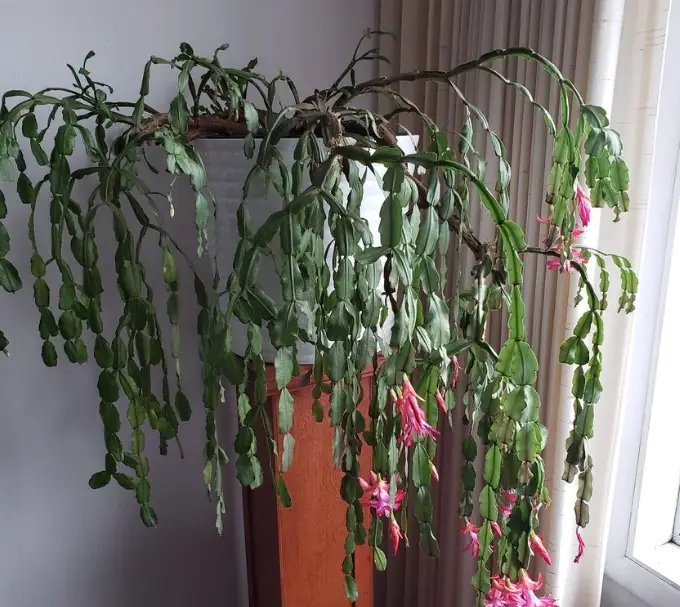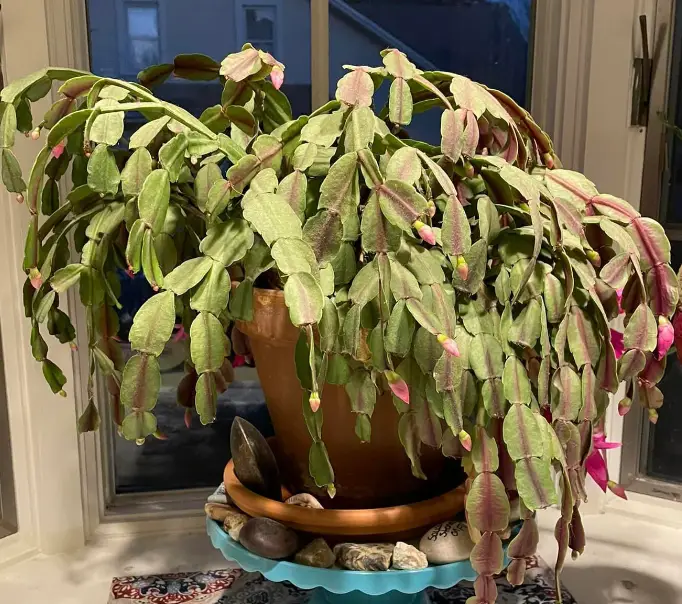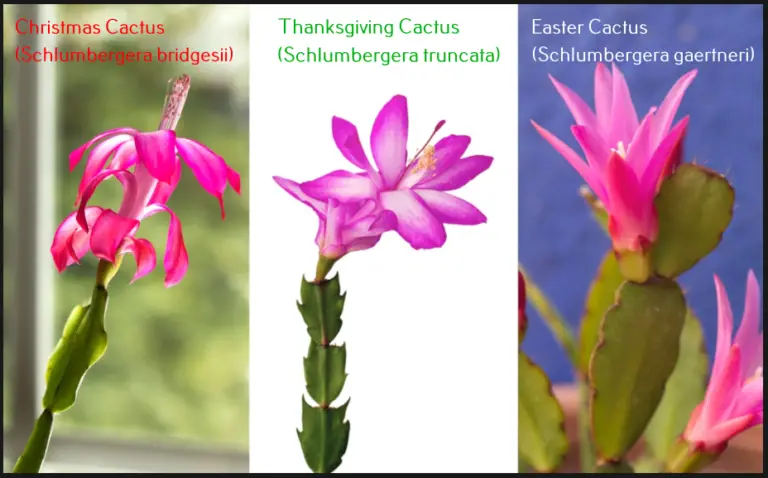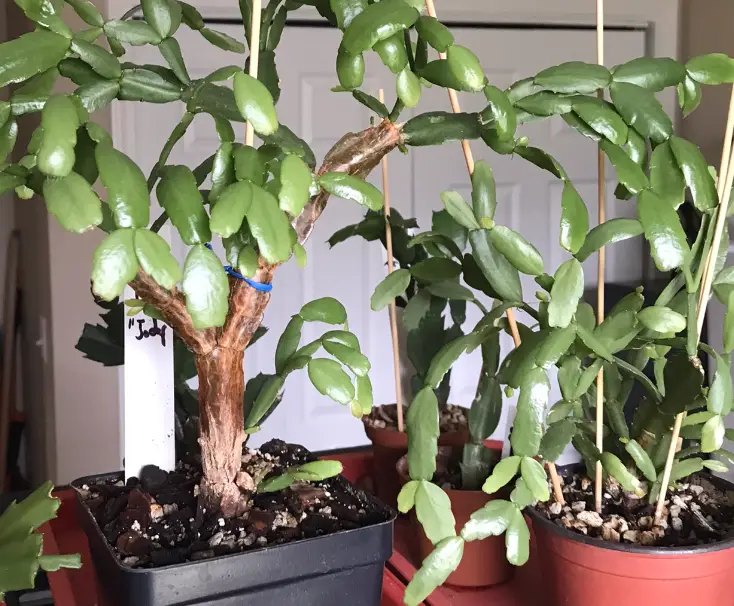How to Revive a Christmas Cactus That is Neglected – In 6 Steps
The Christmas cactus can be handed down from generation to generation. Unfortunately, when the blooms end, most people forget about this heirloom plant without knowing that it can be revived for beautiful blooms in the future.
A neglected Christmas cactus can be revived through some basic care and attention. Water the plant, inspect and treat any pest problems, trim off any dead or wilted sections, and feed with a balanced fertilizer every two to three weeks during the growing season.
You may need to repot the plant if it has outgrown the pot. Don’t forget to keep the Christmas cactus in a spot with bright indirect sunlight and to water only when the top inch of the soil feels dry to the touch.
How to Revive a Christmas Cactus – Steps
If you haven’t attended to your plant since the winter holiday ended, it’s likely to be in distress. You should consider reviving it instead of throwing it away.
Here’s what you need to do:
1. Water the plant
Watering is the first step to reviving a neglected Christmas cactus. If the plant has not been watered for a long time, obviously, the potting soil won’t absorb water as usual. Drenching the soil at once may also drown the plant.
I recommend placing the pot in a water bowl for the soil to absorb the water slowly from the bottom. Alternatively, you can mist the soil using a spray bottle but without drenching the soil. Continue watering sparingly every few days until the soil becomes moist.
Once the soil is saturated, place the pot on a saucer and let the excess water drain out. Christmas cactus doesn’t like soggy soil as it can cause root rot. So, remember to remove the excess water that collects on the saucer before it gets back into the pot.
You should see the Christmas cactus’s wrinkled leaves regaining their turgidity in a few weeks.
2. Relocate the plant
Check if your Christmas cactus receives too much direct sunlight and relocate it to a place that receives bright indirect light. Exposure to too much bright sunlight, especially in the summer, burns the plant foliage and causes it to lose a lot of water.
The holiday cacti plants grow best when placed in a location with partial shade, with a temperature between 70° and 80℉. East or north-facing window would be an ideal place for the plant.
3. Inspect the plant
Once the plant has shown signs of recovery, thoroughly inspect the plant and soil for pests. Mealybugs, scale insects, and spider mites are common pests in a neglected Christmas cactus. They can badly damage the plant and cause fungal or bacterial infection to the plant.
Washing the plant with a strong strand of water can help dislodge some insect pests. Insecticidal soap or agricultural oil such as neem is also effective against houseplant pests. Be sure to use it as directed by the manufacturer.
4. Prune the plant
Trim off segments that feel crunchy and leave those that are soft. This will help to stimulate new growth. Ideally, you should prune a Christmas cactus in spring when the plant enters active growth, preferably when the blooms have ended.
A neglected Christmas cactus may grow into a monstrous plant that is a haven for pests. The overweight foliage may also overwhelm the stems and cause them to split and fall apart. Pruning is the right thing to do to keep the plant in size.
5. Repot if needed
Inspect the soil and test the moisture condition. Consider repotting your Christmas cactus into a new soil mix if the soil is extremely hard or the roots are heavily entangled. Pot-bound roots won’t absorb nutrients and water as needed.
If you repot your plant, use a well-draining soil mix formulated for cactuses and succulents. The new pot should be slightly bigger than the current one and must have a drainage hole at the bottom.
6. Feed the plant
Once your Christmas cactus has fully revived, apply a liquid houseplant fertilizer like 20-20-20 every month throughout spring and summer. You will also need to apply Epsom salt mixed at 1 teaspoon per gallon of water every month, ideally a week after applying your regular fertilizer.
You should stop fertilizing the Christmas cactus when summer ends. It helps in preparing it for blooming in the winter. To get your Christmas cactus to bloom, you’ll need to place it in darkness for 12 to 14 hours each day for six to eight weeks.
Final Thought
Christmas cactus is an easy-to-maintain holiday plant that produces beautiful flowers in winter. Under proper care, this plant can live for many years. Neglected Christmas cacti will likely die due to lack of water, too much direct sunlight, or pests and diseases.
Fortunately, as explained in this guide, you can revive your plant for more blooms in the future. And if you can’t manage to ressurect the plant, you can try to propagate the Christmas cactus using a cutting from a healthy stem to save the plant.
References:
- New Mexico State University: Shriveling Christmas cactus
- University of New Hampshire: How often should I water a Christmas cactus?
- North Carolina Cooperative Extension: Christmas Cactus Care
My name is Diane M Lewik, and I am the founder of this website. I am a degree holder in plant biology from the University of California – Berkeley. Over the years, I have cultivated a vast collection of succulents and I have learned a great deal about how to grow and care for these unique plants. Feel free to ask any questions in the comment section below.
